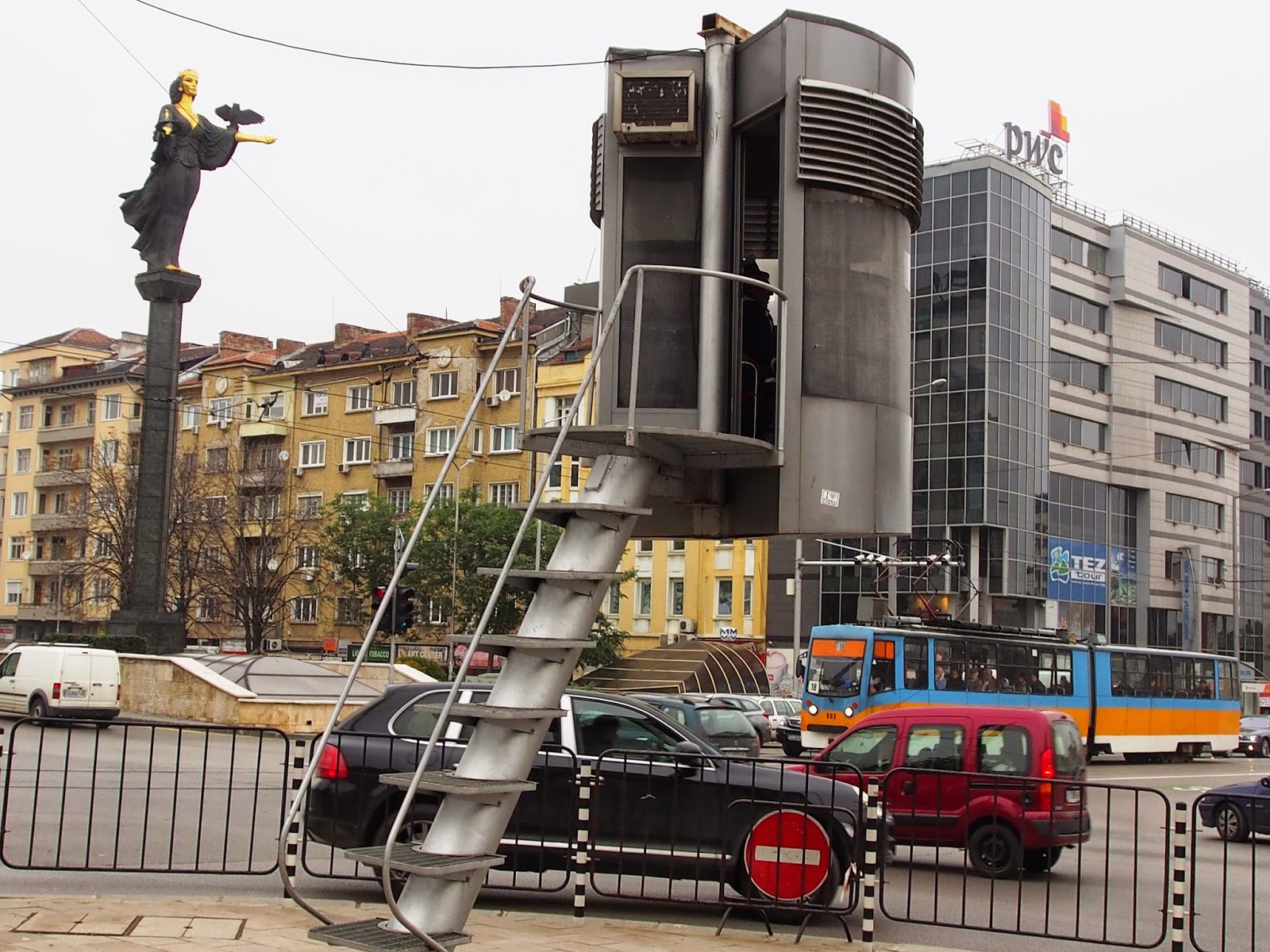Romania and Bulgaria, two of our first tour destinations of the Balkans,
have a number of things in common. They were both under the suzerainty of
Ottoman before the two world wars. Both aligned themselves with the Nazis in
the second. After that they became members of the Warsaw Pact, until the
breakup of the Soviet Union. Both are now members of the European Union.
I was hoping to be greeted by Roma, or the gypsies, when we arrived in
Bucharest, the capital of the former. We have heard so much about these Indo-Europeans
and all of us were told to be extra careful with our wallets. To my
disappointment, we did not get to see any, except for a small village from afar
during our coach journey across Bulgaria. Apparently, only some 3% and 5% of
Romanians and Bulgarians, respectively, are gypsies.
Romania was notorious for its dictator Nicolae Ceausescu during the Cold
War. He and his wife were eventually executed.
 |
| The "monument" commemorating the overthrow of Communism in Romania |
The local tour guide claims that the building in the picture below is
the second biggest in the world – after the Pentagon. He may well be right, but
I really do not see the basis of the claim.
 |
| Second larges building in the world? |
 |
| The Castle of Dracula. I didn't see any vampire there! |
Even though Bulgaria was a member of the Axis, Tsar Boris III, the
reigning monarch was said to have declined to participate in the deportation of
Jews to concentration camps. His sudden death in the summer of 1943 is believed
to be the work of the Nazis. Today, he is a saint to Bulgarians.
The following is a picture I captured in Sofia, the capital of Bulgaria.
Why the capsule at the road junctions?
 Look carefully and you will see a traffic controller in it. We were told
that the controller actually intervened in the change of the traffic lights to
ensure better traffic flows. Maybe our road transport department people should
go there to take a look.
Look carefully and you will see a traffic controller in it. We were told
that the controller actually intervened in the change of the traffic lights to
ensure better traffic flows. Maybe our road transport department people should
go there to take a look.
 Look carefully and you will see a traffic controller in it. We were told
that the controller actually intervened in the change of the traffic lights to
ensure better traffic flows. Maybe our road transport department people should
go there to take a look.
Look carefully and you will see a traffic controller in it. We were told
that the controller actually intervened in the change of the traffic lights to
ensure better traffic flows. Maybe our road transport department people should
go there to take a look.


 Look carefully and you will see a traffic controller in it. We were told
that the controller actually intervened in the change of the traffic lights to
ensure better traffic flows. Maybe our road transport department people should
go there to take a look.
Look carefully and you will see a traffic controller in it. We were told
that the controller actually intervened in the change of the traffic lights to
ensure better traffic flows. Maybe our road transport department people should
go there to take a look.
No comments:
Post a Comment